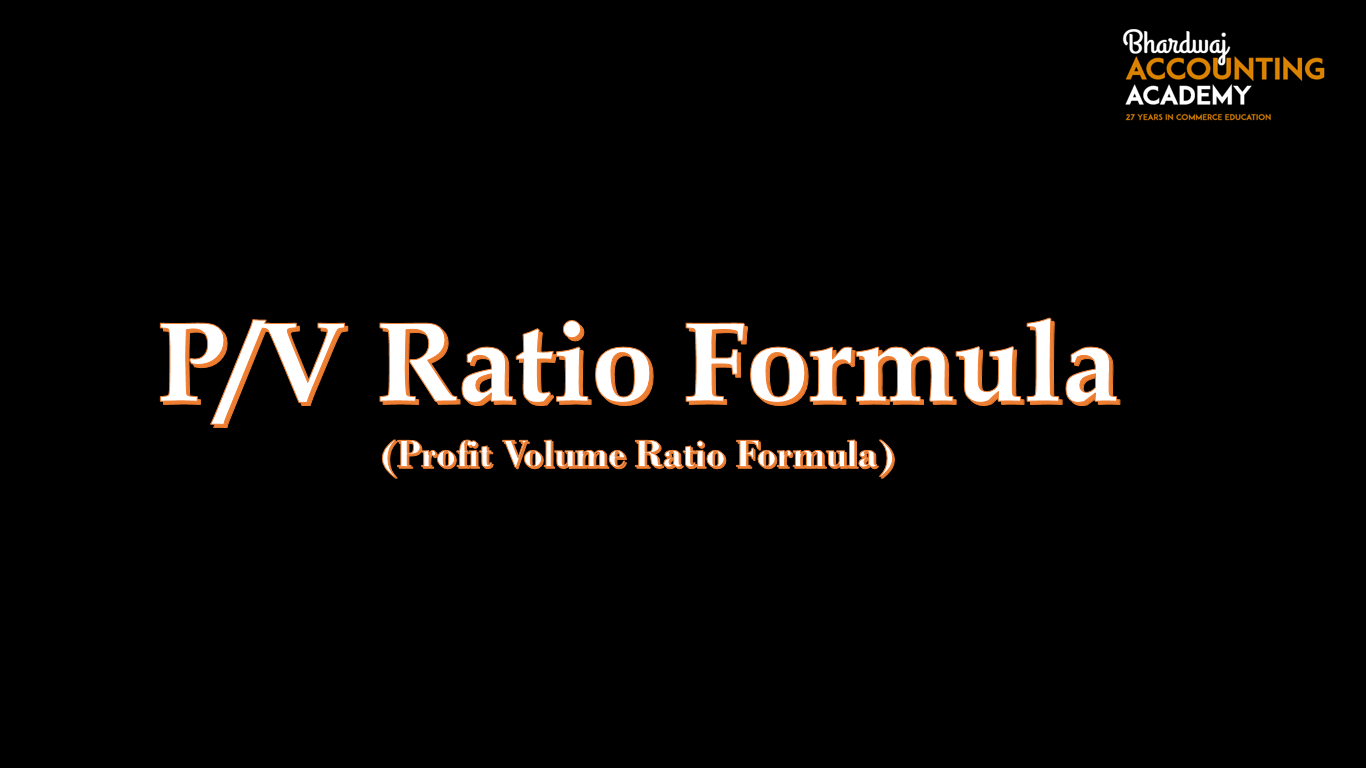Table of Contents
P/V Ratio Formula
P/V Ratio Formula-
PROFIT-VOLUME RATIO (P/V Ratio) – Profit volume ratio refers to a ratio which establishes the relationship between contribution and sales.
This ratio 1s expressed as a percentage.
It is known as the P/V ratio, High P/V ratio indicates a high print provided there is no change in fixed cost.
The higher the contribution is, the greater wi be the P/V ratio.
A business can raise the P/V ratio by increasing selling price, optimum use of machines and men, increasing the efficiency of workers, etc.
This ratio is also known as Marginal Income Ratio, Contributions/Sales Ratio or, Variable Profit Ratio.
You need to identify the ratio of future value and present values of investment by the online ratio calculator.
Importance of P/V Ratio-
Profit volume ratio is a very important ratio. It helps in the calculation of many things such as…
1.To ascertain the variable cost at given sale
(ii) To calculate the Break-even point
ii) To ascertain contribution at a given sale
Contribution= Sales × P/V Ratio
(iv) To take decisions in many areas
(v) To decide sales volume to achieve the desired profit
(vi) To have a comparative study of firms or products etc.
Measures to Improve P/V Ratio-
1.By reducing variable costs
2.By increasing the selling price
3. By increasing the selling price at a rate higher than the variable costs.
4.By selling more products with higher PIN ratio.
Also read : Golden Rules Of Accounting
P/V Ratio Formula-
1.When the contribution and selling price are given in the question-
The difference between selling price and variable cost is called contribution.
Or
Contribution= Fixed Cost + Profit
Or
Contribution= Fixed Cost – Loss
Or
Contribution= Sales × P/V Ratio
1.Example–
Find P/V Ratio from the following informations-
Selling price per unit : Rs. 200
Variable cost per unit: Rs. 120
Fixed Cost :Rs. 5,00,000
Solution-
Selling price per unit : Rs. 200
Variable cost per unit: Rs. 120
Contribution Per unit = 200-120
Contribution Per unit = 80
P/V Ratio= 80×100/200
P/V Ratio=40 %
2.Example–
Find P/V Ratio from the following informations-
Selling price per unit : Rs. 500
Variable cost per unit: Rs. 400
Fixed Cost :Rs. 4,00,000
P/V Ratio Formula-
2.When profit and sales for two financial years is given in the question-
3.Example– Find P/V Ratio from the following informations-
Sales :
2020- Rs. 20,00,000
2021- Rs. 24,00,000
Profit :
2020- Rs. 3,00,000
2021- Rs. 4,60,000
Solution-
Change in profit= 4,60,000-3,00,000
Change in profit=1,60,000
Change in Sales = 24,00,000-20,00,000
Change in Sales =4,00,000
P/V Ratio= 1,60,000 x 100/4,00,000
P/V Ratio=40 %
4.Example– Find P/V Ratio from the following informations-
Sales :
2020- Rs. 50,00,000
2021- Rs. 70,00,000
Profit :
2020- Rs. 5,00,000
2021- Rs. 6,80,000
P/V Ratio Formula-
3.When Profit, Fixed Cost and sales is given in the question-
5.Example–
Find P/V Ratio from the following informations-
Sales : Rs. 10,00,000
Profit : Rs. 2,00,000
Fixed Cost :Rs. 1,00,000
Solution-
P/V Ratio= (1,00,000+2,00,000) × 100/10,00,000
P/V Ratio=3,00,000× 100/10,00,000
P/V Ratio=30 %
6.Example–
Find P/V Ratio from the following informations-
Sales : Rs. 5,00,000
Profit : Rs. 1,00,000
Fixed Cost :Rs. 80,000
P/V Ratio Formula-
4.When Loss, Fixed Cost and sales is given in the question-
7.Example–
Find P/V Ratio from the following informations-
Sales : Rs. 10,00,000
Loss : Rs. 2,00,000
Fixed Cost :Rs. 5,00,000
Solution-
P/V Ratio= (5,00,000-2,00,000) × 100/10,00,000
P/V Ratio=3,00,000× 100/10,00,000
P/V Ratio=30 %
8.Example–
Find P/V Ratio from the following informations-
Sales : Rs. 5,00,000
Loss : Rs. 50,000
Fixed Cost :Rs. 2,00,000
Also read : REVALUATION ACCOUNT/ PROFIT & LOSS ADJUSTMENT ACCOUNT









